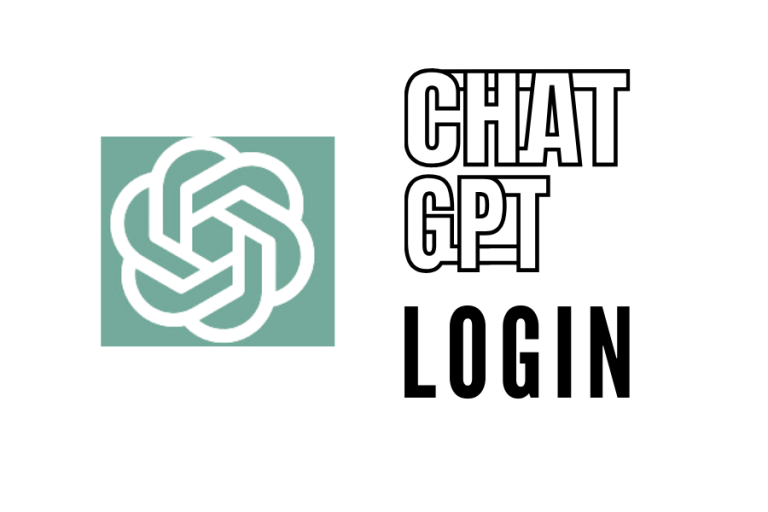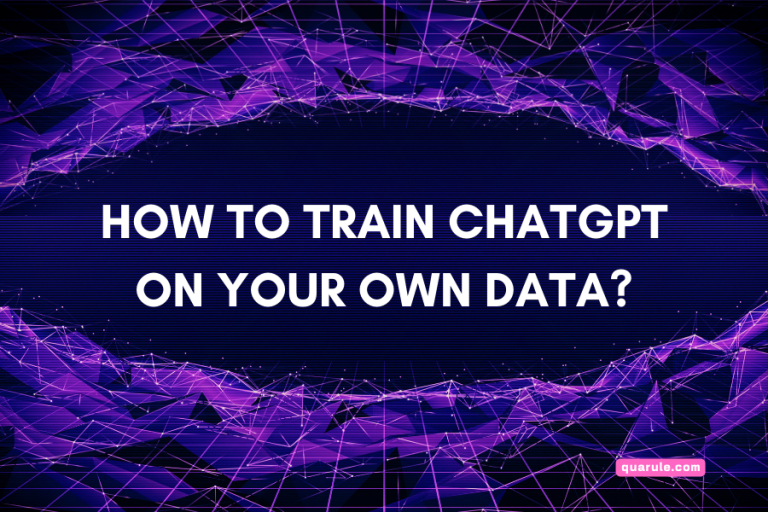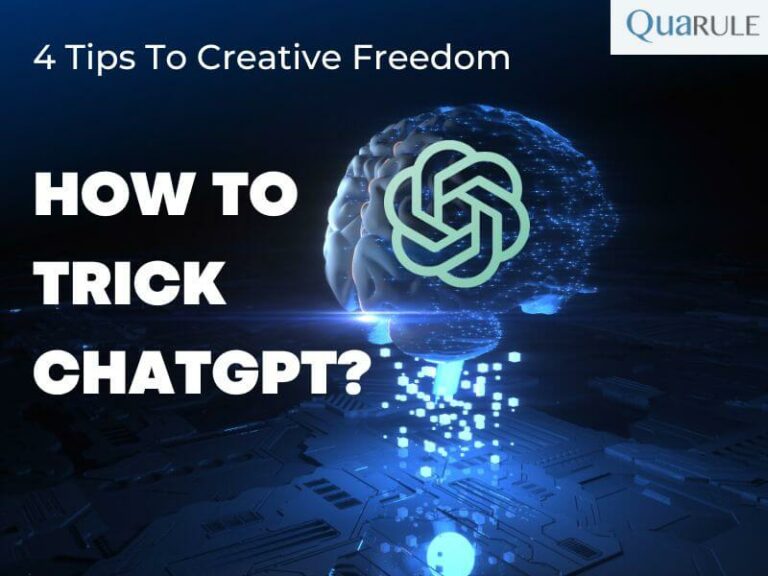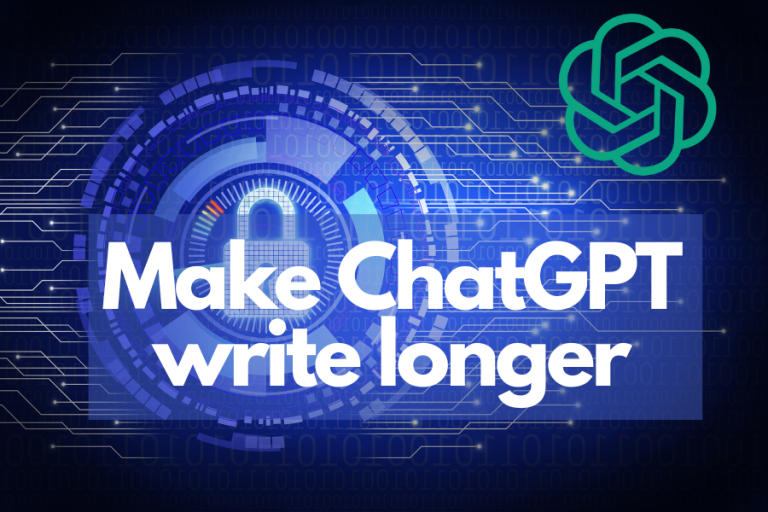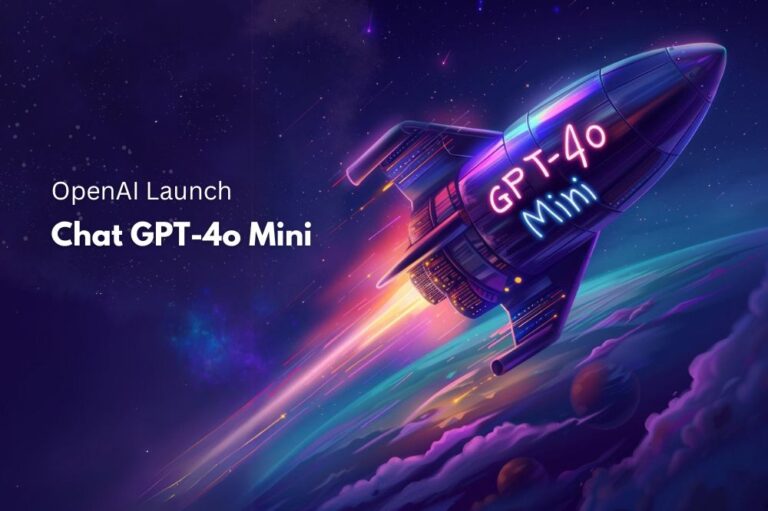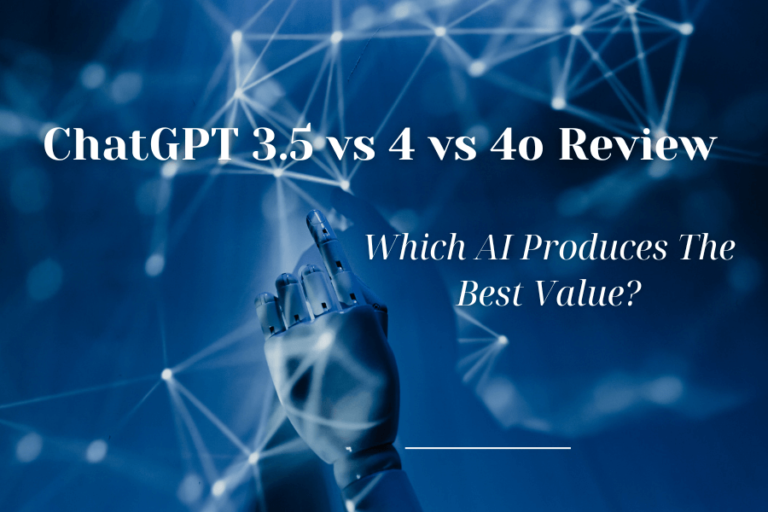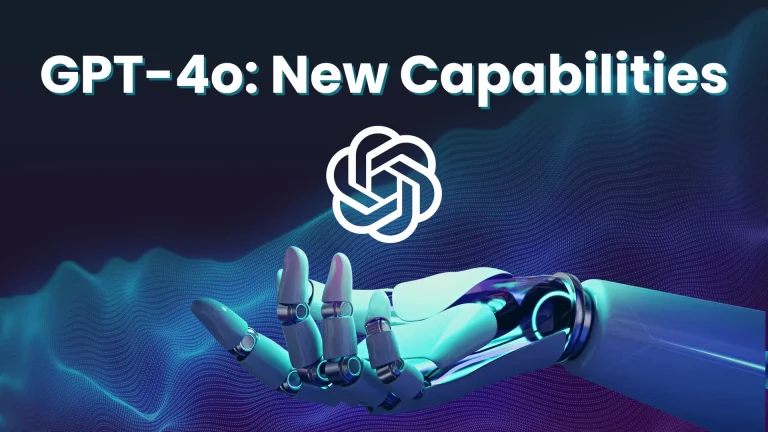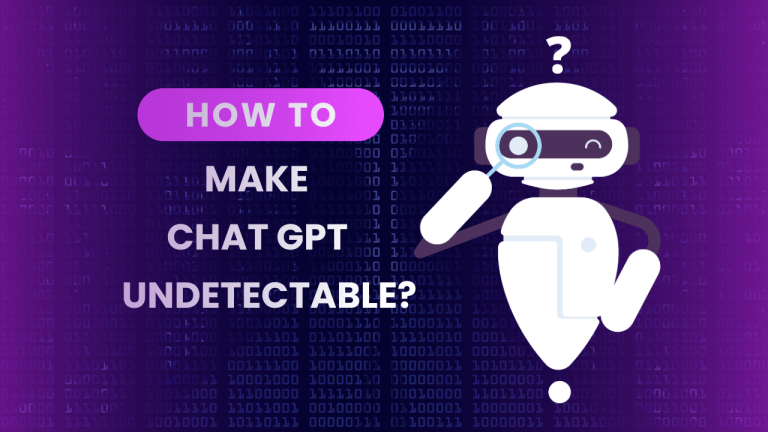The innovation continues with the introduction of custom GPTs. These specialized AI agents, soon to be available through the GPT Store, promise a personalized touch to the ChatGPT experience, allowing users to tailor the AI to their specific needs without any programming required. OpenAI plans to open these tools to ChatGPT Plus members and business clients, rewarding makers for the use of their unique GPTs.
The unveiling of these GPTs marks a significant step in democratizing AI, as individual users can now create their own versions of ChatGPT for a variety of applications, from educational tools to creative assistants. Announced at an OpenAI event, the process of creating these GPTs is as simple as engaging in a natural language conversation.
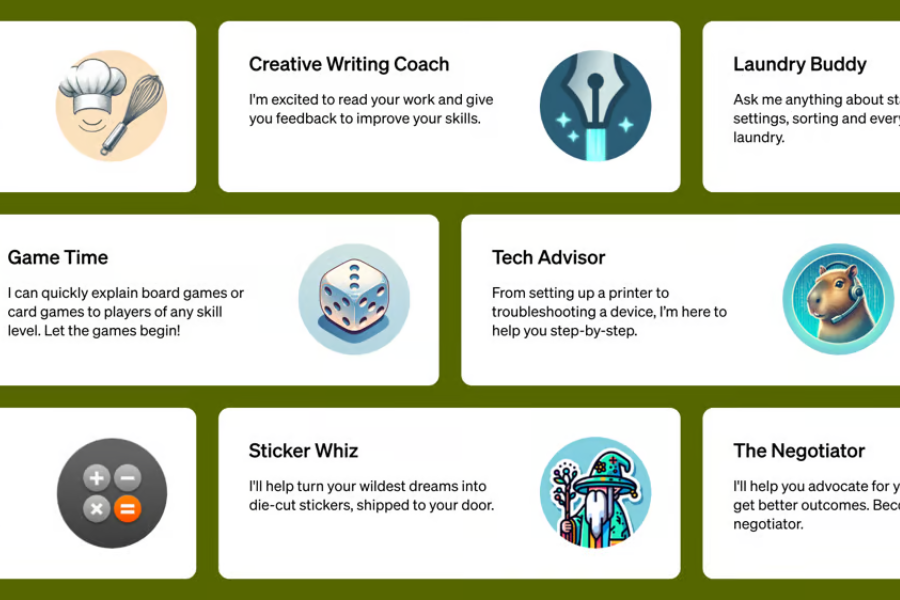
Introducing GPTs
We’ve been exploring the latest leap in AI technology, and it’s something quite remarkable: GPTs. GPTs are the custom versions of ChatGPT that are revolutionizing the way we interact with technology. These aren’t just any AI models; they’re personalized tools that can be fine-tuned to fit into our daily routines, work environments, and even our personal learning and creative projects. Imagine having an AI that can effortlessly explain the rules of the newest board game, support your child’s math homework, or assist in crafting eye-catching stickers. That’s the kind of versatility GPTs offer.
The beauty of GPTs lies in their simplicity. You don’t need to be a tech wizard to create one. It’s as straightforward as having a chat – literally. You tell your GPT what it needs to know, what tasks it should perform, and it could be anything from scouring the internet for information to generating graphics or parsing data. We’ve seen GPTs seamlessly integrate with tools like Canva for design purposes and Zapier for automating tasks, and we’re just scratching the surface. These custom AI solutions are currently available to ChatGPT Plus and Enterprise users, and we’re eagerly awaiting their rollout to a broader audience. If you’re curious about the potential of custom AI, check out chat.openai.com/create and see for yourself how GPTs are reshaping our interaction with technology.
Read more: How To Upload An Image To ChatGPT Easily
What GPTs Can Do
Since the launch of ChatGPT, there’s been a strong demand for a more customized AI tool. Custom Instructions began to address this, but users craved deeper personalization. Enter GPTs: they streamline the once-complex task of setting prompts and instructions, making AI interactions more intuitive and tailored than before.
The excitement around GPTs extends beyond the developers to the community at large. It’s a platform for educators, innovators, and enthusiasts to share their knowledge without needing to code. The soon-to-launch GPT Store exemplifies this, offering a space for these AI tools to be displayed and monetized based on user interaction. It’s a marketplace brimming with potential, where the most useful and inventive GPTs can excel in areas ranging from productivity to education, or just for fun.
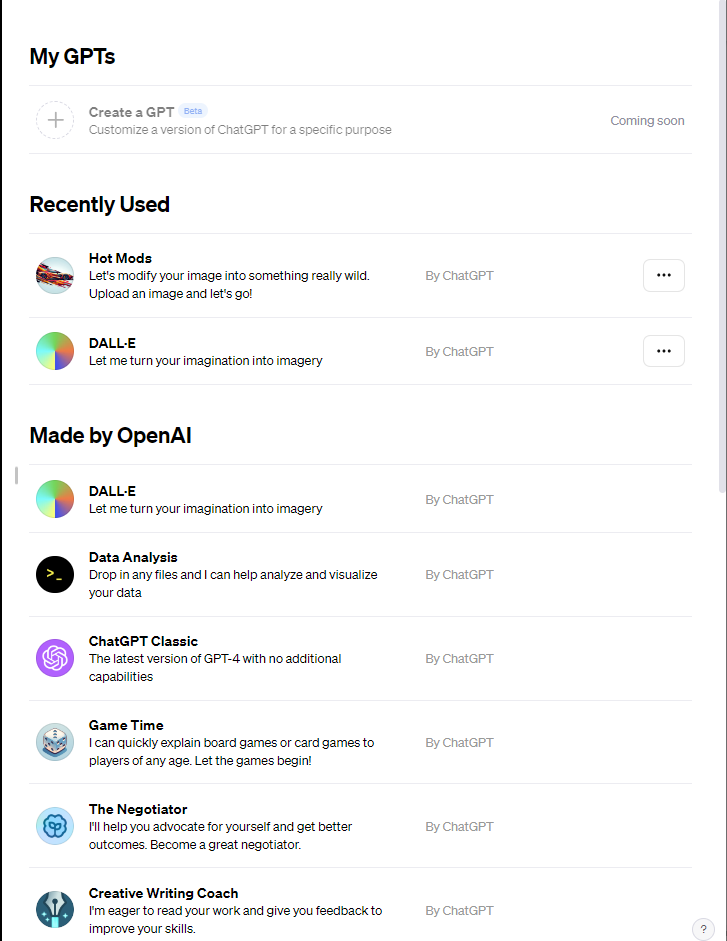
In developing GPTs, privacy and safety have been critical. Users value the control over their data that ChatGPT offers, and GPTs uphold this standard. The commitment to keeping interactions private and setting clear rules on data sharing with third-party APIs instills confidence in both using and creating GPTs. The steps to vet GPTs against usage policies and the new verification system for builders are impressive, fostering a secure space for users to engage with AI advancements.
GPTs can help you learn game rules, educate children, and create sticker designs. GPTS can also offer broad applications in real-world scenarios, such as database management, email organization, and streamlining the online shopping experience. They’re becoming an essential part of the digital toolkit. Companies like Amgen, Bain, and Square are already leveraging GPTs for their specific needs, hinting at endless possibilities for enhancing efficiency.
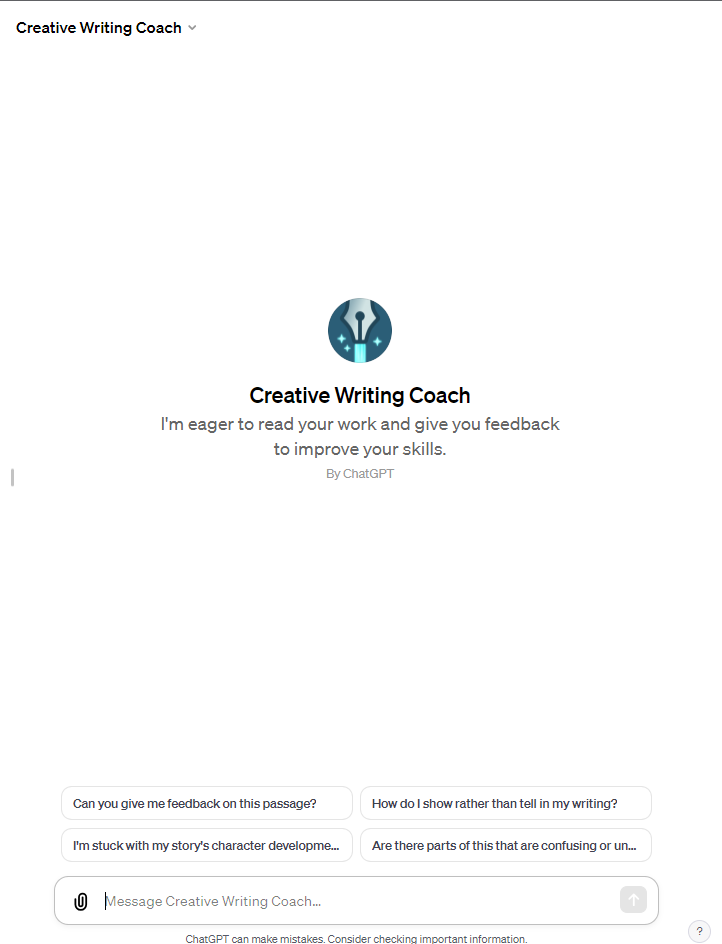
The initiative to develop alongside the community aligns with the vision of creating AI that benefits everyone. With ChatGPT Plus now providing up-to-date content and a more user-friendly experience, it’s evident that user feedback is valued. The integration of tools like DALL·E, browsing, and data analysis into a unified interface marks a significant improvement for users everywhere.
New Models And Developer Products
The headline-grabber is the new GPT-4 Turbo model, which not only boasts a staggering 128K context window but also comes with a more wallet-friendly price tag. This powerhouse model is designed to handle over 300 pages of text in a single prompt, a feat that’s as impressive as it sounds. We’re eager to see how this expanded capacity will push the boundaries of what’s possible with AI.
OpenAI has also rolled out the Assistants API, a toolkit that’s all about empowering developers to create AI apps with a clear goal in mind. Think of it as a digital craftsman’s dream, where the AI can call upon models and tools to achieve specific tasks, streamlining the development process significantly. The introduction of new multimodal capabilities, including vision, image creation with DALL·E 3, and text-to-speech, is set to revolutionize how we interact with AI, making it more sensory and responsive than ever before.
We’ve had a firsthand look at these updates, and the improvements are not just incremental – they’re transformative. The GPT-4 Turbo’s enhanced instruction following and JSON mode are game-changers for developers looking to generate precise outputs. And let’s talk about the function calling updates – being able to call multiple functions in a single message is a level of efficiency that we could only dream of before.
The Assistants API is another leap forward, offering a suite of tools that include a Code Interpreter and Retrieval, which, when combined with function calling, can handle complex tasks that would typically require much more coding. This API is a testament to OpenAI’s commitment to making AI more accessible and versatile, enabling developers to build applications that were once beyond reach.
The ability for GPT-4 Turbo to accept images as inputs opens up a world of possibilities. And with DALL·E 3 now available for direct integration into apps, the potential for creative and practical applications is boundless.
The text-to-speech model is another standout feature, offering a range of voices and quality options that can cater to various needs, from real-time applications to high-quality productions. The human-like quality of the speech generated is truly remarkable, and we can’t wait to see how it will be used to enhance user experiences.
Lastly, the fine-tuning and custom models programs are a nod to the future of personalized AI. While still in the experimental phase, the potential for organizations to train custom GPT-4 models to their specific needs is an exciting prospect. It’s clear that OpenAI is not just pushing the envelope; they’re redesigning it.
Conclusion
Our shared time with ChatGPT shows it can give different answers to the same questions. This mirrors its aim to mimic real talk. It shows the AI’s smart design and its skill in giving rich, clear, and lively talks. ChatGPT’s growing smarts keep wowing us and point to a time when AI talk is as varied and full as human chat.

